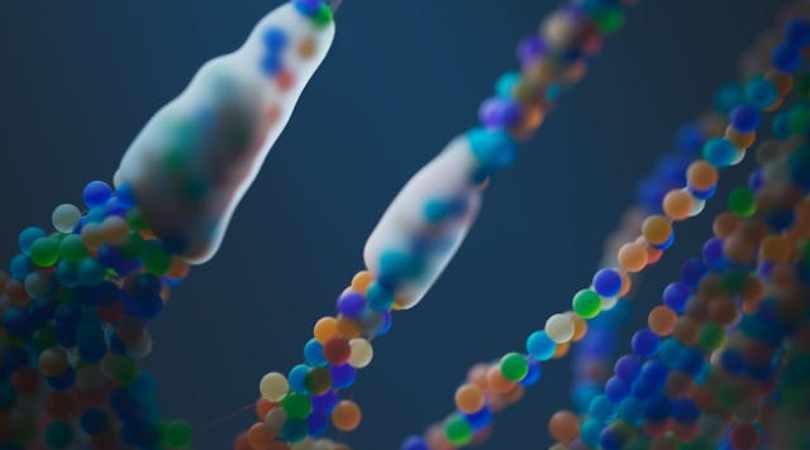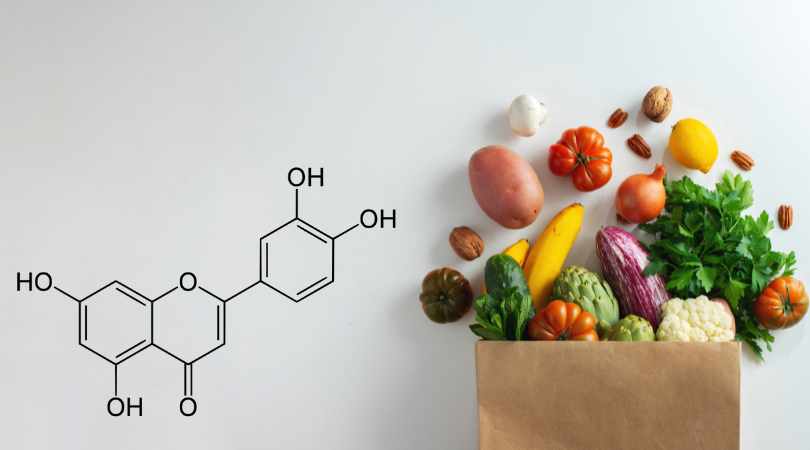Scientists have successfully restored the lost uricase enzyme, a key breakthrough in combating fructose-induced fat formation. This discovery offers new hope for preventing obesity and metabolic disorders by targeting how the body processes sugar and stores fat.
Limited Quantities Available! Order Today and Enjoy Free Shipping on Orders Over $100!
De Novo Lipogenesis
The process by which the liver converts excess carbohydrates—especially fructose—into fat, driving fatty liver and insulin resistance.
When Sugar Turns to Fat—Fast
De novo lipogenesis is how your liver converts excess sugar into fat. And fructose is the fastest trigger in the process.
Unlike glucose, which is regulated throughout the body, fructose is rapidly metabolized in the liver where it’s turned into fat—even if you’re not overeating. This fat often accumulates silently in the liver and around organs, contributing to NAFLD and insulin resistance.
SugarShield helps support healthy fat metabolism by targeting the pathway upstream—where fructose metabolism begins. By promoting energy balance and mitigating the effects of fructose, it helps reduce the drivers of unnecessary fat storage.
Explore SugarShieldShort Definition
The process of fat creation from non-fat sources. The liver converts excess carbohydrates – especially fructose – into fat, driving fatty liver and insulin resistance.
What is De Novo Lipogenesis?
De novo lipogenesis (DNL), also known as de novo fatty acid synthesis, is a biological process by which the body converts non-lipid precursors into fatty acids, which are then stored as fat2. DNL is unique as our body is able to store fat without fatty-acids consumption by utilising excess carbohydrates – especially sugars. The term "de novo" means "from the beginning," and in this case refers to the creation of fat from non-fat sources.
The main function of DNL is energy storage in the form of fat. From an evolutionary standpoint, we developed it as a survival mechanism in periods of cold exposure, dehydration, and food scarcity. Incorporation of fatty acids into triglycerides for energy storage allowed us to stimulate epigenetic changes and metabolic alterations promoting survival scenarios. DNL ensured a dense, long-term energy reserve.
However, in the modern diet we have 24/7 access to a wide range of calorie-rich food and improved quality of life allows us to avoid extreme temperature exposure, dehydration and famine. In this case, DNL becomes less effective and sometimes can even be harmful. Carbohydrates overconsumption – particularly fructose – overactivate DNL. We can experience its negative impacts such as hepatic fat accumulation, development of insulin resistance, and non-alcoholic fatty liver disease (NAFLD).
So, under normal metabolic function, DNL was designed to help store energy for later use. But in today's environment of constant caloric surplus – particularly from refined carbohydrates – it can become chronically overactive, turning the liver into a fat factory. When addressing treatment of diabetes, obesity or cardiovascular failure we can question the very beginning of metabolic dysfunction – the lipogenic pathway. Understanding its mechanism may provide new therapeutic strategies supporting modern cellular metabolism.
Liv3 Health is aiming to address the complex relationship between fructose consumption and de novo lipogenesis. By focusing on preventing metabolic dysfunction and improving overall well-being we aim to find ways to mitigate potential risks of fructose metabolism and promote healthier dietary choices through SugarShield.
Biochemistry of De Novo Lipogenesis
Biochemically, lipogenesis is a series of enzymatic reactions that result in converting: Carbohydrate to Acetyl-CoA (a carrier molecule in metabolic reactions) to fatty acid3. DNL is regulated by hormones and meal composition. The nutritional status determines the amount of available substrate to start the process of lipogenesis. Hence, meals high on carbohydrates make DNL most active, especially during prolonged fructose consumption.
Fructose - the Main Driver of DNL
Carbohydrates - the precursors of DNL - have different contributions to the lipogenesis mechanism and fructose is uniquely powerful at activating DNL. While glucose undergoes highly regulated glycolysis and can be diverted into glycogen storage (not fully converted to Acetl-CoA), fructose metabolism is unregulated, fast and is efficiently converted to Acetyl-CoA. Therefore, fructose directly drives DNL resulting in fat accumulation occuring primarily in the liver, where it is largely metabolised, resulting in non-alcoholic fatty liver disease (NAFLD).
Fructose metabolism has a unique pathway that bypasses the body’s typical energy-regulating checkpoints and insulin signals. It is accelerated by fructokinase - the kickstart enzyme that rapidly phosphorylates it to fructose-1-phosphate depleting ATP (cellular energy). Excessive activation of the fructose pathway – whether dietary or internal – can disrupt cellular energy, driving DNL.
Even if you're avoiding added sugars in your meals, your body can generate fructose internally via the polyol pathway, also known as endogenous fructose synthesis1. It happens when excess glucose is converted to an intermediate - sorbitol (also known as polyol) - and then to fructose. We can experience it especially during dehydration, stress, alcohol consumption, or high salt and carb intake. This means the trigger for DNL can be endogenous, further complicating efforts to reduce fat accumulation through diet alone.
In summary, fructose:
- Is absorbed quickly and shuttled directly to the liver;
- Can be created inside our body;
- Bypasses the normal insulin-regulated steps of glucose metabolism;
- Rapidly generates acetyl-CoA, the key building block for fatty acid synthesis.
In practical terms, this means a high-fructose meal can flood the liver with substrates that are immediately used to create fat – even when overall fat intake is low. This is why fructose is considered lipogenic: it promotes fat creation from sugar that is then accumulated in the liver. It results in a huge variety of metabolic syndromes such as: insulin resistance; promoting type 2 diabetes; raised levels of uric acid (a byproduct that promotes mitochondrial dysfunction and inflammation); DNL; NAFLD. The key mechanism lies in fructokinase activity, which accelerates fructose metabolism and amplifies its metabolic consequences. Addressing excessive fructose exposure, whether dietary or endogenous, is critical in managing modern metabolic disease.
Health Consequences of Excess DNL
DNL is most active in the liver, though it can also occur in fat tissue and other organs under certain conditions. The excessive amount of unprocessed carbohydrates is converted into triglycerides (fat molecules), many of which are exported into the bloodstream or stored in the liver itself – contributing to:
- NAFLD – fat accumulation in liver cells independent of alcohol consumption, often silent but potentially progressive. It can progress to a variety of worsen conditions such as cirrhosis, fibrosis or even liver cancer (Hepatocellular carcinoma);
- Insulin resistance – liver fat disrupts glucose metabolism and hormonal signaling. Liver cells no longer efficiently respond to insulin, causing type 2 diabetes. development and hyperinsulinemia.
- Hypertriglyceridemia – elevated triglyceride levels in the blood, a risk factor for heart disease.
- Visceral fat gain – fat stored around organs, associated with metabolic syndrome and inflammation. Visceral fat is metabolically active and secretes pro-inflammatory cytokines - driving chronic diseases.
Critically, DNL can continue even without high dietary fat, which is why people following “low-fat” but “high-carb” diets can still gain visceral and liver fat.
The LIV3 Perspective
At LIV3, we see DNL not just as a result of overeating – but as a metabolic switch flipped by fructose metabolism, whether that fructose is from diet or created internally. We investigate the problem from the cellular energy point of view, exploring main drivers of the biological mechanisms beyond our will. Our goal isn’t simply to cut calories or fats – but to interrupt the fructose-driven pathways that lead to excessive fat creation in the first place. We believe that it is more important to create a long-term resolution, without sticking to short-term changes.
By supporting the body with fructokinase - fructose metabolism driver - inhibitors like luteolin, and uric acid reducers like tart cherry extract, we believe we can calm the metabolic storm upstream - before sugar ever becomes fat.
References
- Andres-Hernando, Ana; Johnson, Richard J.; Lanaspa, Miguel A. (2019). Endogenous fructose production what do we know and how relevant is it? Current Opinion in Clinical Nutrition and Metabolic Care, 22(4), 289-294. DOI: 10.1097/MCO.0000000000000573
- Fatima Ameer, Lisa Scandiuzzi, Shahida Hasnain, Hubert Kalbacher, Nousheen Zaidi. (2014). De novo lipogenesis in health and disease. Metabolism, 63(7), 895-902. https://doi.org/10.1016/j.metabol.2014.04.003
- Song, Z., Xiaoli, A. M., & Yang, F. (2018). Regulation and Metabolic Significance of De Novo Lipogenesis in Adipose Tissues. Nutrients, 10(10), 1383. https://doi.org/10.3390/nu10101383






